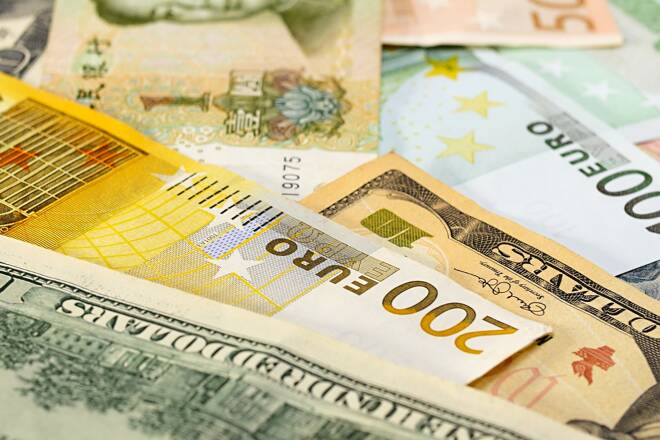Advertisement
Advertisement
EUR/USD: Under Pressure as European Inflation Cools, China’s Recovery Falters
By:
The Euro faces downward pressure due to cooling inflation and disappointing economic data, signaling a bearish outlook against the U.S. Dollar.
In this article:
Highlights
- Cooling inflation in Europe reduces likelihood of ECB interest rate hike.
- China’s factory activity contracts faster than expected, signaling a slowdown in recovery.
- Euro’s short-term forecast is bearish against the U.S. Dollar.
Overview
The Euro is under pressure against the U.S. Dollar on Wednesday after data showed European inflation is cooling quicker than expected and China’s recovery is sputtering.
At 15:04 GMT, the EUR/USD is trading 1.0661, down 0.0071 or -0.66%. The Invesco CurrencyShares Euro Trust ETF (FXE) is at $98.51, down $0.60 or -0.60%.
Euro Weakens as Inflation Cools
Newly released data from Wednesday showed that inflation in France and some of Germany’s largest regions is decreasing. This information has led analysts to believe that the European Central Bank (ECB) is less likely to raise interest rates. As a result, the euro is becoming less attractive compared to the dollar.
The lower-than-expected inflation data in France reduces the chances of an ECB interest rate increase, which in turn weakens the euro.
In May, inflation in France dropped to its lowest level in a year, mainly due to a moderation in energy and food price increases. We are still awaiting inflation data for the entire eurozone, which will be released tomorrow.
Inflation in Europe is currently on the decline, and this means that the previously expected interest rate hikes by the ECB are being scaled back. Additionally, the resolution of the U.S. debt ceiling dispute is supporting U.S. stocks and likely bolstering the dollar.
U.S. Dollar Strengthens on Weak Chinese Data
The U.S. currency received a boost due to disappointing economic data from China, according to analysts. A survey released on Wednesday revealed that China’s factory activity contracted at a faster pace than anticipated in May, indicating a potential slowdown in the country’s recovery from COVID-19 lockdowns.
As a result of this news, China’s currency, the yuan, reached its lowest level since November and currently stands at 7.1304 per dollar.
The main factor influencing the market is the strength of the U.S. dollar following weaker-than-expected data from China. This development has sparked concerns among investors about the global recovery and the possibility of a worldwide recession.
Short-Term Outlook: Bearish
Based on today’s developments, the short-term forecast for the Euro appears bearish against the U.S. Dollar. The Euro is currently under pressure due to cooling inflation in Europe, particularly in France and Germany, which reduces the likelihood of the European Central Bank (ECB) raising interest rates. This diminishes the euro’s attractiveness compared to the dollar.
Furthermore, disappointing economic data from China, specifically the faster-than-expected contraction in factory activity, has boosted the U.S. currency. This has led to concerns among investors about the global recovery and the potential for a global recession.
Overall, these factors indicate a bearish outlook for the Euro in the short term, suggesting it may continue to weaken against the U.S. Dollar.
Technical Analysis
The EUR/USD is trading lower on Wednesday and on the bearish side of 1.0834 (S1), indicating significant selling pressure. If this move generates enough downside momentum, we could see a test of 1.0657 (S2).
Watch for a technical bounce on the first test of 1.0657 (S2), but be prepared for even further downside action if this level fails as support.
| S1 – 1.0834 | R1 – 1.1141 |
| S2 – 1.0657 | R2 – 1.1272 |
| S3 – 1.0527 | R3 – 1.1449 |
For a look at all of today’s economic events, check out our economic calendar.
About the Author
James Hyerczykauthor
James is a Florida-based technical analyst, market researcher, educator and trader with 35+ years of experience. He is an expert in the area of patterns, price and time analysis as it applies to futures, Forex, and stocks.
Latest news and analysis
Advertisement
